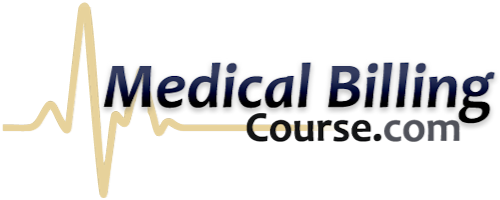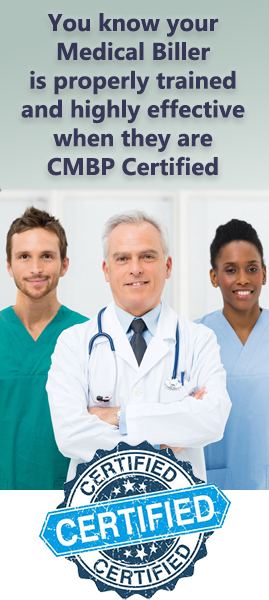- 08/15/2025
- Posted by: Medical Billing Course
- Categories: Medical Billing Course, Medical Billing Software

Starting out in the world of medical billing can feel overwhelming, especially if you’re navigating claims, insurance policies, and regulations for the first time.
Choosing the right medical billing software for beginners is often the single biggest step toward making your work easier, faster, and less stressful.
For new billers, whether launching a small home-based operation, supporting a new practice, or adding skills for a career change, the right tool can transform complicated billing tasks into manageable, repeatable routines.
With so many options promising simplicity, automation, and affordability, how do you know which solution to trust?
The answer isn’t just about picking the “easiest” platform. It’s about finding a system that aligns with your workflow, offers strong support, and provides features that reduce errors and speed up reimbursement.
For those who want to get ahead quickly, pairing user-friendly software with foundational training, such as that offered by Medical Billing Course, can set you up for long-term success and confidence.
What Makes Medical Billing Software “Beginner-Friendly”?
Before you dive into specific platforms, it’s important to understand what sets medical billing software for beginners apart from more advanced or enterprise solutions.
Beginner-friendly software is designed with clarity and guidance in mind, so new users don’t get lost in technical jargon or complex navigation.
Key Characteristics of Easy Medical Billing Software
- Intuitive Interface: Menus and dashboards should be self-explanatory, allowing you to access claims, patient details, and reports without a steep learning curve.
- Guided Workflows: Step-by-step task flows for claim creation, submission, and follow-up are essential for anyone still learning the ropes.
- Built-In Help and Support: A help button, chat support, or searchable knowledge base within the software helps new users troubleshoot questions as they go.
- Minimal Setup Requirements: The best user-friendly medical billing software lets you start entering data, submitting claims, and generating invoices with little or no technical setup.
- Accessible Anywhere: Cloud-based solutions are popular with beginners, as you can work from home, a clinic, or anywhere with an internet connection.
Designed for Home Use and New Businesses
Many people exploring medical billing software for home use or launching a medical billing software for new businesses need tools that don’t require a dedicated IT team.
Simplicity, clear documentation, and responsive customer service are priorities.
New users should look for options that advertise ease of use, offer free demos, or provide clear onboarding materials, so you don’t waste time figuring out how to get started.
Top Medical Billing Software Options for Beginners

Choosing the right software means understanding your needs and comparing platforms based on features, support, and affordability.
Here are some of the most recommended options for those new to medical billing, based on real user reviews and current industry trends.
1. EZClaim
EZClaim is frequently highlighted for its straightforward desktop and cloud solutions, making it an excellent choice for both solo billers and small practices.
Its interface is uncluttered, and new users benefit from access to extensive webinars, user guides, and a responsive support team.
For those wanting easy medical billing software that doesn’t overwhelm, EZClaim delivers on simplicity and reliability.
- Key Features: Drag-and-drop claim entry, customizable reports, and clearinghouse integration.
- Best For: Home users, startups, and part-time billers.
- Free Trial: Yes, free demo and personalized walkthroughs available.
2. DrChrono
Mobile-first and cloud-based, DrChrono appeals to beginners looking for flexible, intuitive software that also integrates electronic health records (EHR).
The platform is praised for its clean dashboard, guided claim creation, and quick onboarding process.
- Key Features: Mobile app, customizable templates, automatic coding assistance.
- Best For: New businesses, medical offices adding billing as a new function.
- Free Trial: Yes, 14-day free trial, plus video tutorials for new users.
3. RXNT
RXNT is a budget-friendly choice for those searching for simple medical billing software without sacrificing core functionality. Its setup wizard and comprehensive onboarding guide help new users become productive quickly.
- Key Features: Real-time eligibility checks, claim scrubbing, and easy payment posting.
- Best For: Solo billers, home-based users, and small clinics.
- Free Trial: Yes, no credit card required for basic trial.
4. OpenEMR
If you’re tech-savvy and prefer open-source tools, OpenEMR is a respected platform for medical billing and practice management.
It’s free to use and highly customizable, though beginners may need to invest some time in setup and training. There’s an active user community for troubleshooting.
- Key Features: Customizable billing modules, support for multiple languages, and free software.
- Best For: Tech-confident home users, those wanting maximum flexibility at minimal cost.
- Free Trial: Not needed; the platform is open-source and always free.
5. Cortex EDI
Cortex EDI specializes in affordable, web-based medical billing for beginners, offering a clear path from claim entry to payment posting. It emphasizes simplicity and transparent pricing, ideal for new businesses or home billers.
- Key Features: Online claims entry, built-in payer lists, automated eligibility checks.
- Best For: New practices, billing startups, remote/home billers.
- Free Trial: Yes, request a demo or access a limited free version.
Key Considerations for Beginner-Friendly Medical Billing SoftwareWhat Beginners Should Consider: Features, Learning Curve, Pricing, and Support
With so many options, how do you narrow down the best medical billing software for beginners for your unique needs? Focus on these four key considerations:
1. Essential Features for New Users
The right software should help you avoid common medical billing claim errors and streamline every step.
Look for these must-haves:
- Guided Claim Creation: Templates and error-checking help reduce rejections.
- Automated Eligibility Verification: Instantly check patient coverage before submitting claims.
- Claim Scrubbing: Automated checks for coding mistakes or missing data.
- User Dashboard: A central location to track claims, payments, and rejections.
- Customizable Reporting: Simple, exportable reports to monitor your work.
2. Understanding the Learning Curve and Support
For many, the fear is that “new software = steep learning curve.” Fortunately, most user-friendly medical billing software is designed to get you up and running fast:
- Onboarding Guides and Tutorials: Platforms like EZClaim and DrChrono offer video walkthroughs, step-by-step guides, and even live onboarding sessions.
- In-App Help Desks: Pop-up help and searchable FAQs mean you never feel stuck.
- Community Forums: OpenEMR and RXNT have active user forums for troubleshooting and sharing advice.
- Customer Support: Always check for phone, email, or chat support, especially for home users who may need quick answers.
For those who want more structured, hands-on training, programs like Medical Billing Course provide deep dives into not just the basics of using software, but the best practices for managing claims, troubleshooting, and preventing common errors.
Such training can make the difference between just “getting by” and truly thriving as a new biller.
3. Pricing, Free Trials, and Affordability
For many beginners, cost is a major factor. The good news is that most leading medical billing software for home use or small businesses offer:
- Transparent, tiered pricing: Expect to pay anywhere from $0 (open source) to $150/month (for fully managed, cloud-based systems).
- Free trials: Nearly every major platform provides a 7- to 30-day trial. Always take advantage of this to test the interface and see if it matches your workflow.
- No long-term contracts: Look for options that allow you to upgrade as your business grows, without locking you into a high-cost plan.
- Home use options: Many platforms have scaled-down versions for solo users or those working part-time from home.
When evaluating price, remember to factor in support, training, and update fees. Cheaper isn’t always better if it means more headaches down the road.
What Tasks Can Medical Billing Software Automate for Beginners?
One of the biggest advantages of using easy medical billing software is the ability to automate repetitive, error-prone tasks. Automation saves you time, increases accuracy, and allows you to focus on customer service and problem-solving.
Core tasks that can be automated:
- Eligibility Checks: Verify insurance coverage for every patient automatically.
- Claim Submission: Submit claims electronically to multiple payers in one click.
- Payment Posting: Record payments and update patient accounts without manual data entry.
- Follow-Up Reminders: Set up alerts for denied claims, overdue payments, or expiring authorizations.
- Report Generation: Automatically generate end-of-month or quarterly billing reports.
Many platforms also include basic medical billing software training modules so you can learn about new automations as they’re added.
For those who want to go further, Medical Billing Course.com’s curriculum covers how to maximize automation features for better accuracy and productivity.
Conclusion: Choosing Software and Building Your Medical Billing Confidence
Stepping into the world of medical billing software for beginners is a smart move for anyone looking to simplify the complexities of healthcare billing.
The best software options make it easy to start, automate routine work, and learn as you go. Prioritize intuitive interfaces, clear support options, and affordable pricing when making your choice.
Remember: Your skills as a biller are your greatest asset.
Tools alone can take you far, but pairing your chosen platform with the right training can make all the difference.
If you want to feel truly confident managing claims, troubleshooting issues, and growing your billing business, consider the structured support and expert guidance offered by Medical Billing Course.
Get started today—try a free demo, explore a few platforms, and don’t hesitate to invest in training that helps you turn every software tool into a gateway for new opportunities.
FAQs
What medical billing software is recommended for new users?
Popular choices for new users include EZClaim, DrChrono, RXNT, and OpenEMR. These platforms are recognized for their simple interfaces, guided workflows, and strong support resources, making them ideal medical billing software for beginners.
Are there free trials available for beginner-friendly medical billing software?
Yes, most top-rated beginner software platforms offer free trials ranging from 7 to 30 days. This allows you to test the user-friendly medical billing software features, interface, and support options before committing.
How steep is the learning curve for basic medical billing software?
The learning curve is generally gentle for most entry-level platforms. With clear tutorials, onboarding sessions, and in-app help, even complete beginners can become comfortable in a matter of days or weeks. For those wanting deeper skills, medical billing software training or structured courses can be very helpful.
Can medical billing software automate common tasks for beginners?
Absolutely. Many simple medical billing software options automate claims submission, eligibility checks, reminders, and reporting. Automation helps reduce manual errors and speeds up routine work.
What support is typically offered for new users of medical billing software?
Support can include live chat, phone or email assistance, video tutorials, searchable help centers, and community forums. The best platforms for new users provide a blend of real-time support and self-help resources.

